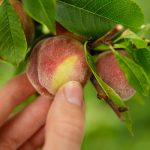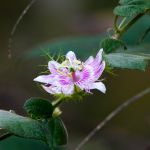Thanks to perfectly timed fall rains, Texas is experiencing a wildflower season for the ages. Look for these bold blossoms drawing selfie seekers and pollinators alike.
Wildflowers are turning heads after last fall’s heavy rains set the stage for a wildly lovely spring display. To me, part of the allure of wildflowers is knowing how they fit into the natural world. Texas’ spring blooms sustain not only local wildlife populations, but migrating birds and butterflies, as well.
Since fall is the best time to plant wildflowers, last autumn I scattered seeds and tucked some transplants into my garden. The spring show has begun at home and all across Texas. These blossoms also support bees, beetles, flies, birds and other wildlife up along the food chain.
Bluebonnets
The bluebonnet in one word: iconic. Six species of bluebonnets represent the state flower, and delight Texans and visitors alike each spring. It’s an irresistible tradition to take photos nestled among these lovely lupines. Just be careful not to trample wildflowers in your quest for the perfect photo. And look out for natural color variations in your travels. You might spot white, pink or even purple bluebonnets!
Bluebonnets are a bumblebee favorite and a host plant for butterflies, including Henry’s Elfin and Gray Hairstreak. While their caterpillars may munch on them, don’t let your kids or pets do the same as the leaves and seeds are toxic if ingested.
When mature, bluebonnet seed pods will pop open, twisting to toss and disperse the seeds. They resemble little stones — good camouflage from hungry birds! Here’s the scoop on how to grow bluebonnets at home.
Indian Paintbrush
Look for spikes of Indian paintbrush among the fields of bluebonnets. The allure of this wildflower comes not from the tiny green flowers but the colorful surrounding bracts. These modified leaves look like they were dipped in reddish or pink paint. The showy bracts attract hummingbirds, bumblebees and other pollinators, along with humans for photo opportunities. Indian paintbrush is a good early nectar source and is best grown by scattering seeds in the fall. It does not transplant well as these plants are often hemiparasitic, attaching their roots to nearby host plants and drawing nutrients from them.
Mexican Evening Primrose
Delicate pink cups are appearing in drifts all around my neighborhood. If you peek inside, the flowers are lined with pink veins and fade from pink to white and then yellow at the center. These patterns help pollinators find their nectar rewards. The scented blooms are said to open in the evening in the northern areas of its range and in the morning in more southern regions. Fair warning, the lovely Mexican evening primrose can spread aggressively.
Firewheel
Firewheel is easy to recognize with its showy red centers and yellow edges. It’s also called Indian Blanket or gaillardia. Abundant stands of this distinctive wildflower adorn roadsides and meadows, attracting butterflies and bees. Easy to grow, firewheel shines in full sun and is drought-hardy, just make sure the area is well-drained. Deadhead to extend the bloom season but leave some seeds on for the goldfinches. These fuss-free plants will reseed annually.
Remember to wait before mowing wildflowers until after they have set seed to ensure a colorful display next spring. It may look a little messy for a while, but you’re also leaving out a buffet for wildlife.
Ready to hit the road? Check out the Lady Bird Johnson Wildflower Center’s Texas Wildflower Center for suggested wildflower drives and more information on common wildflowers.




